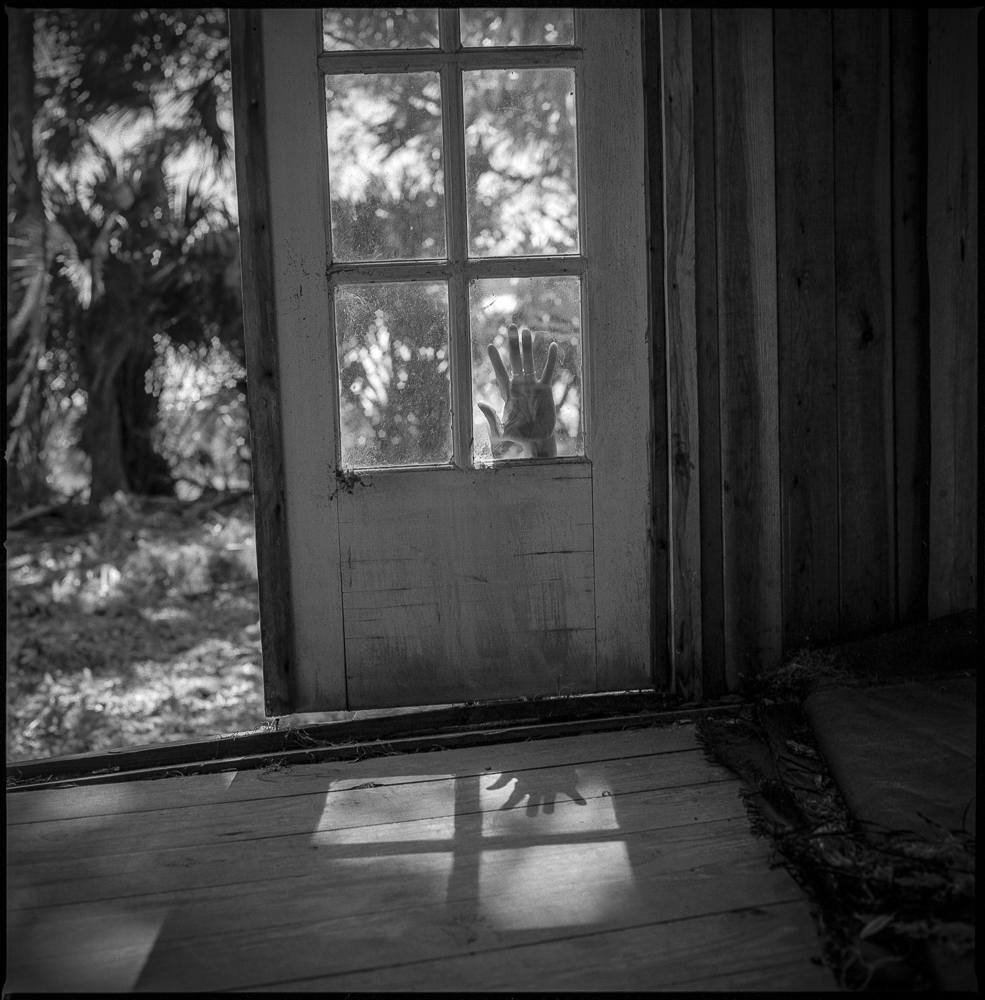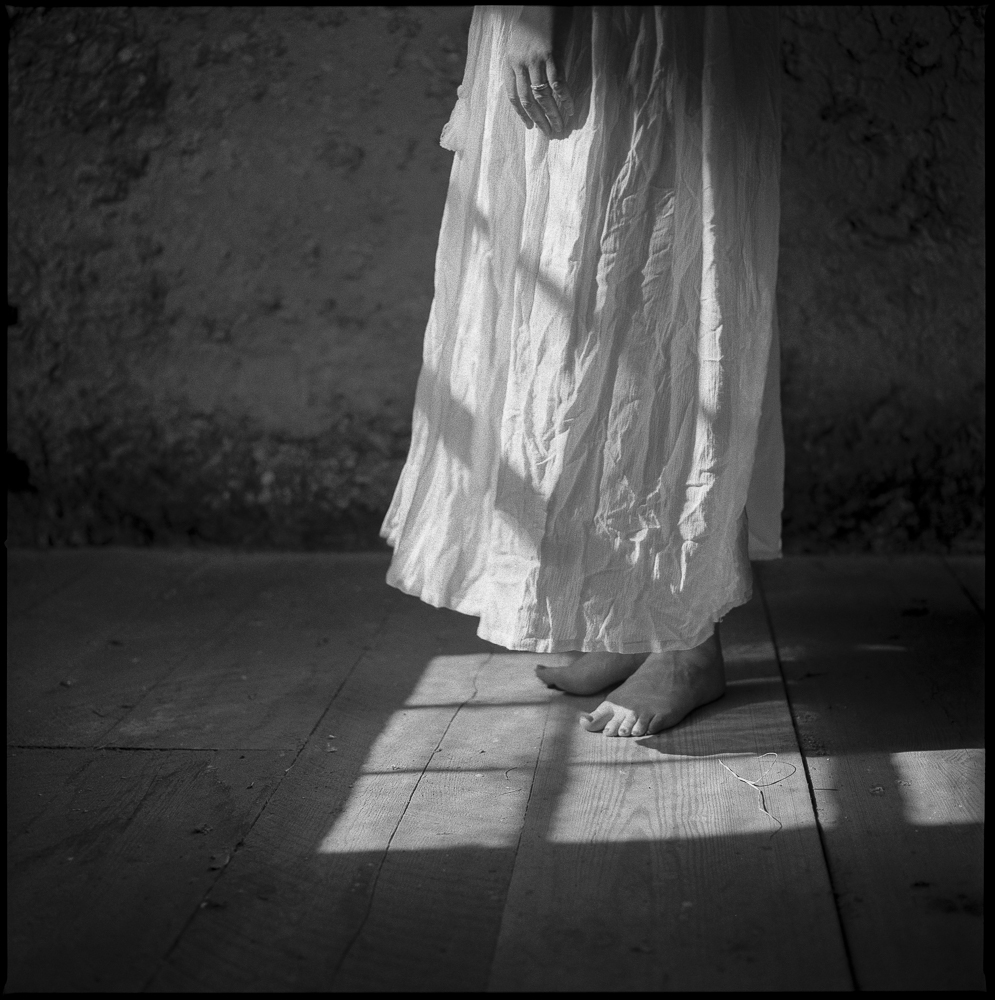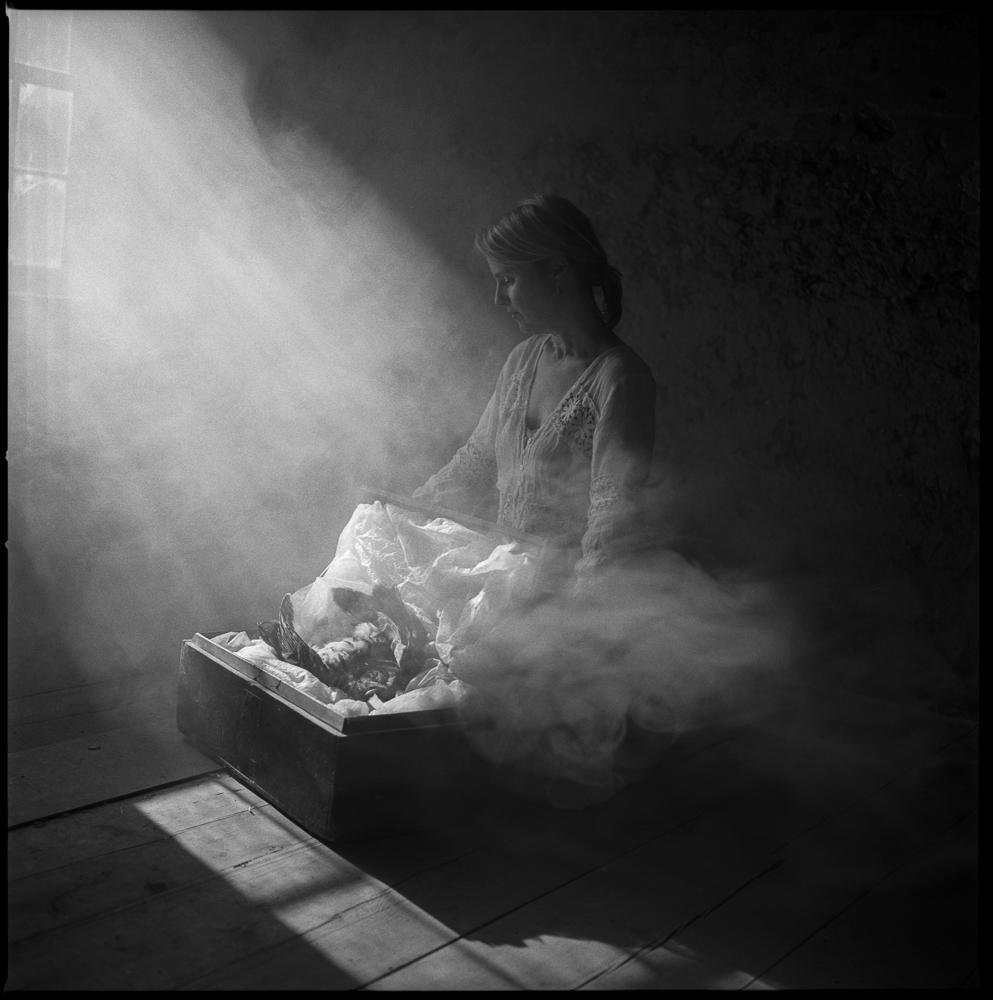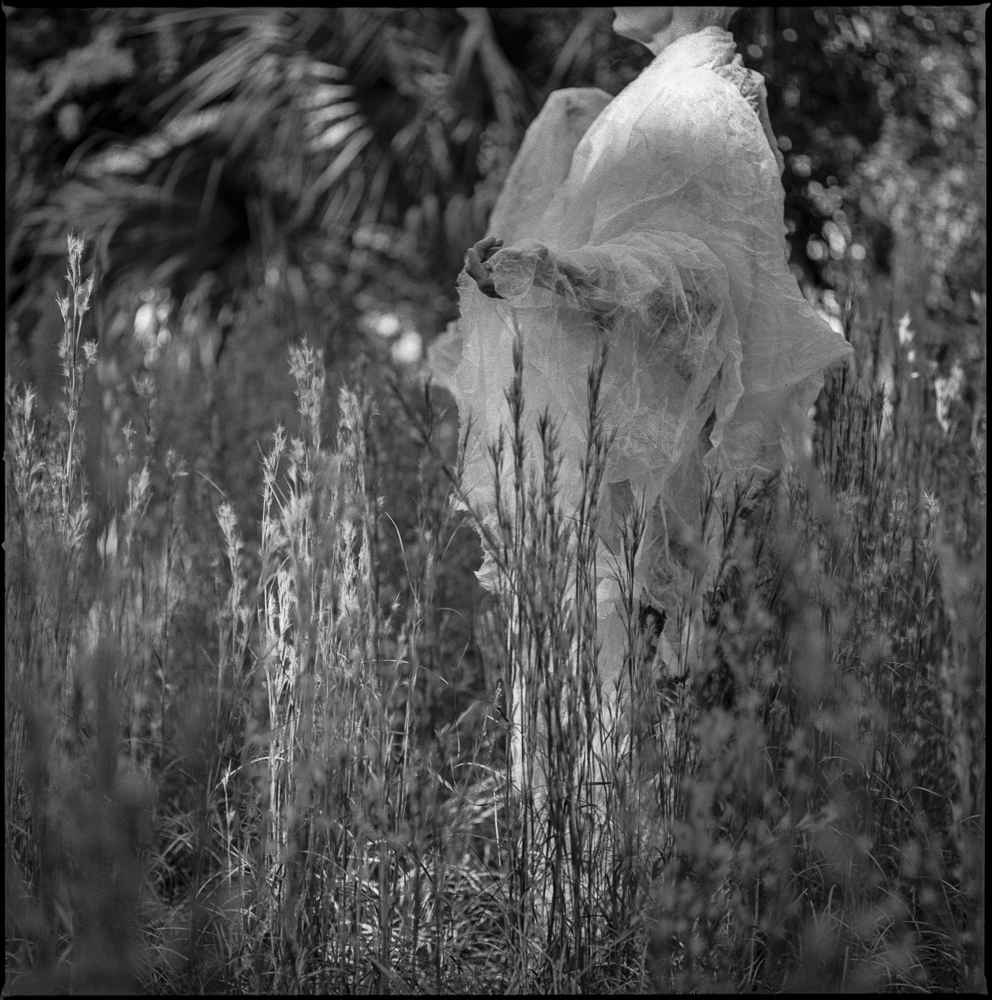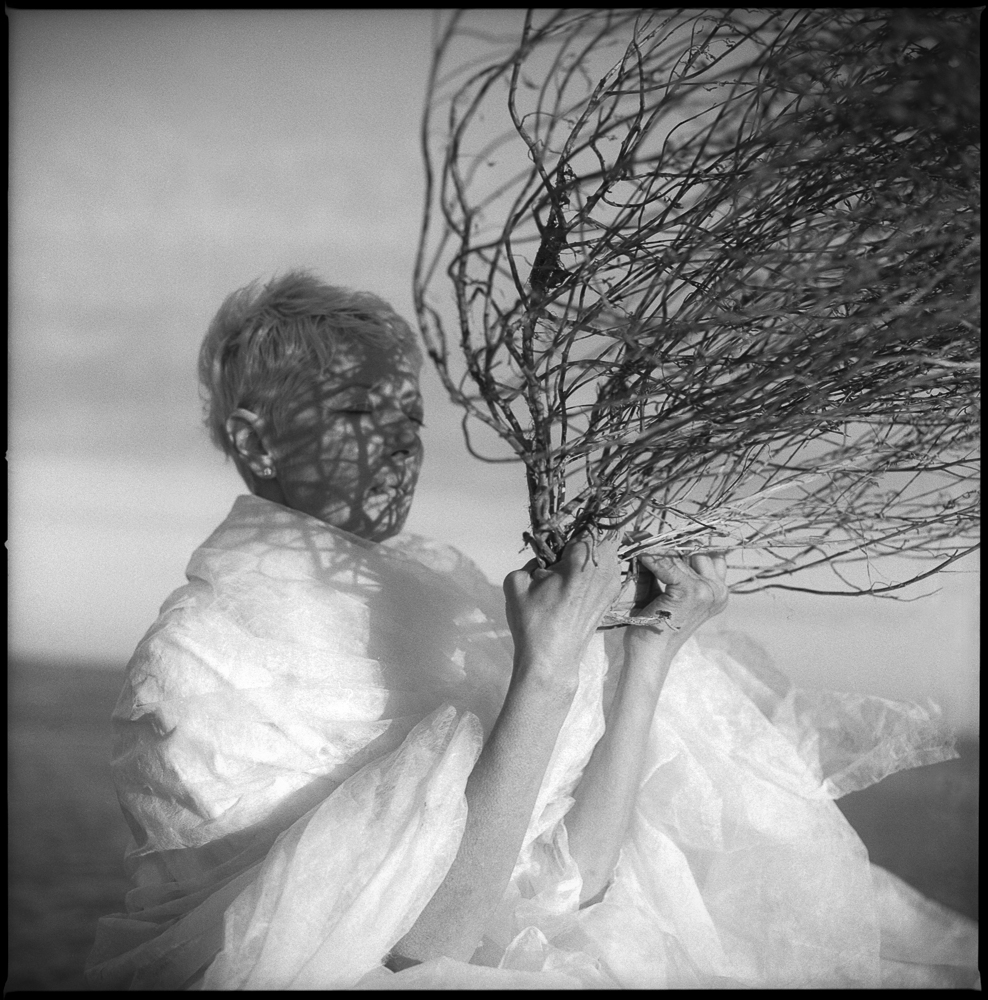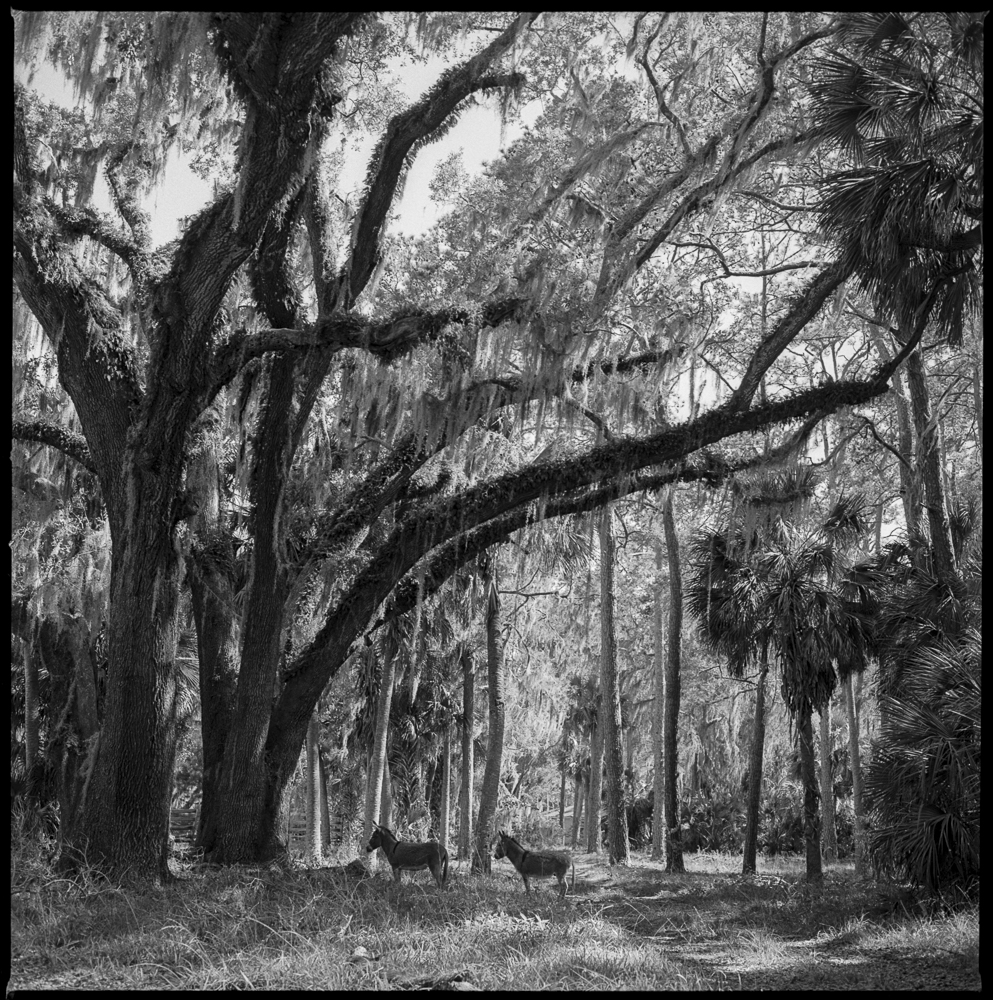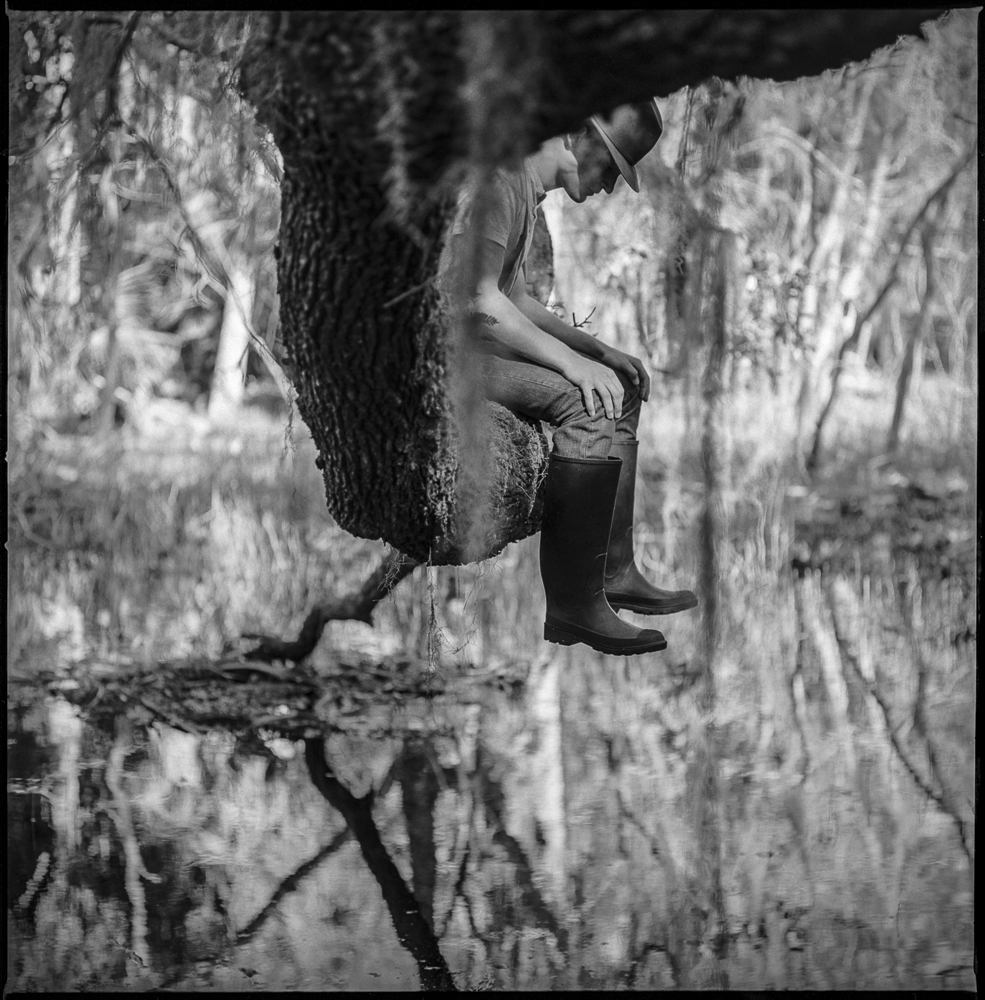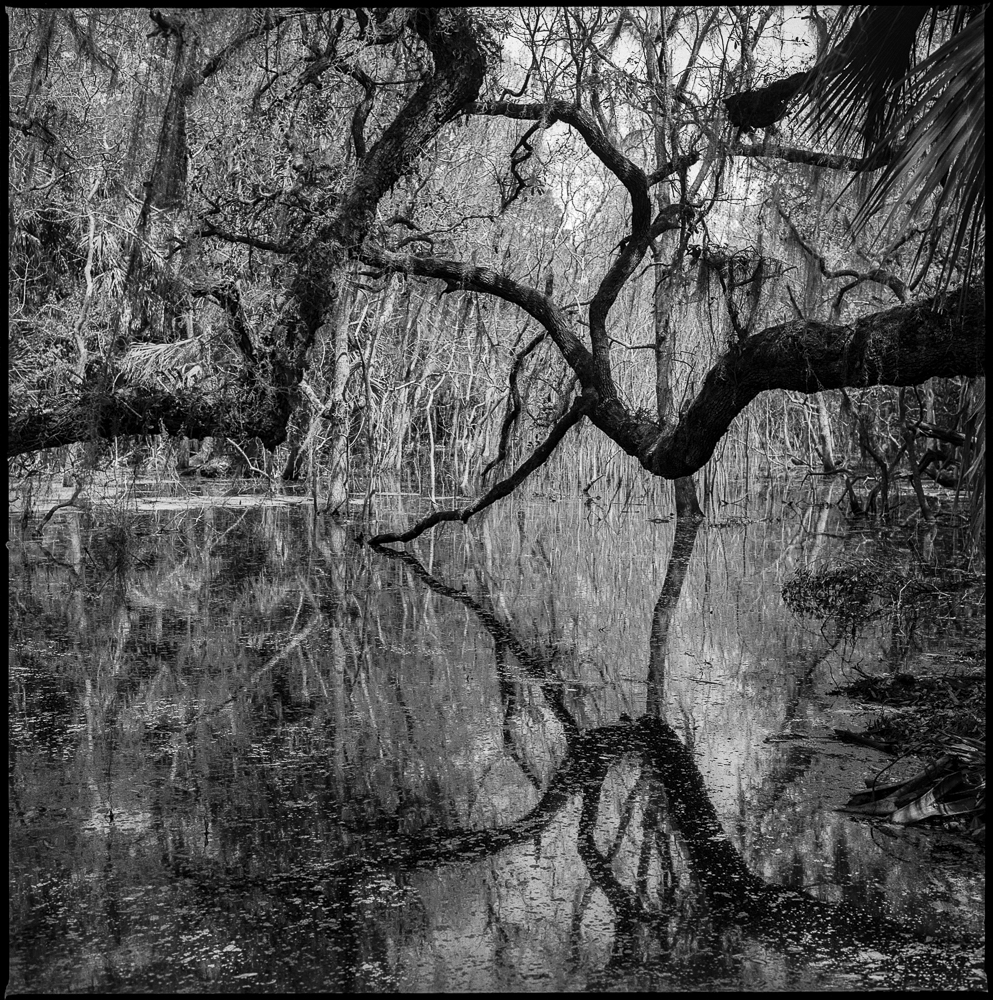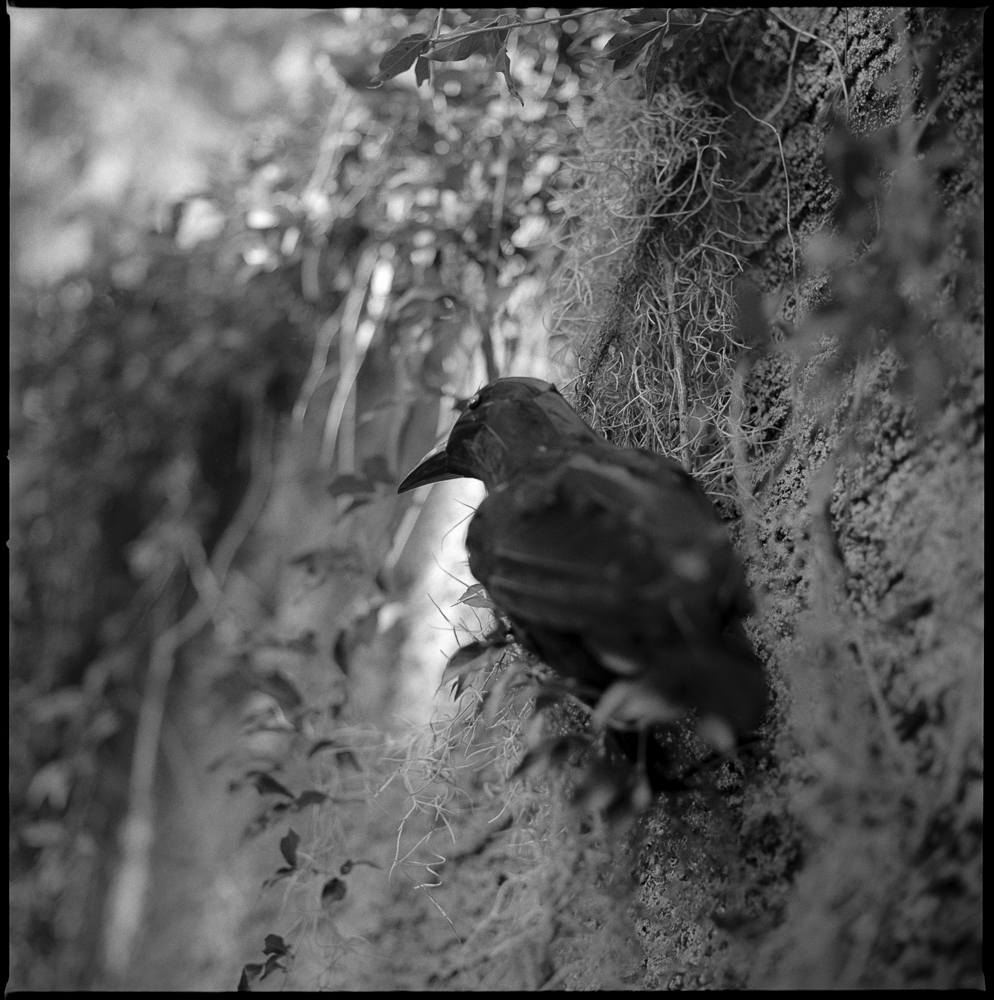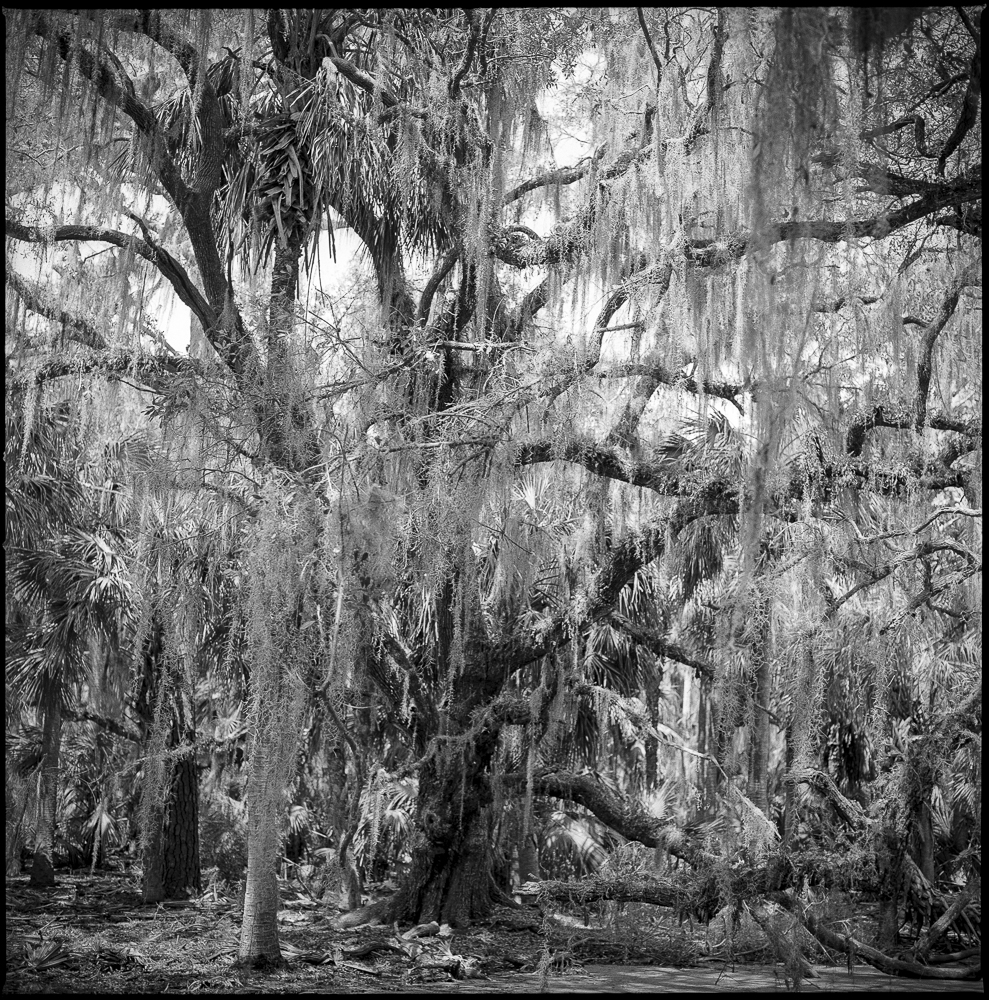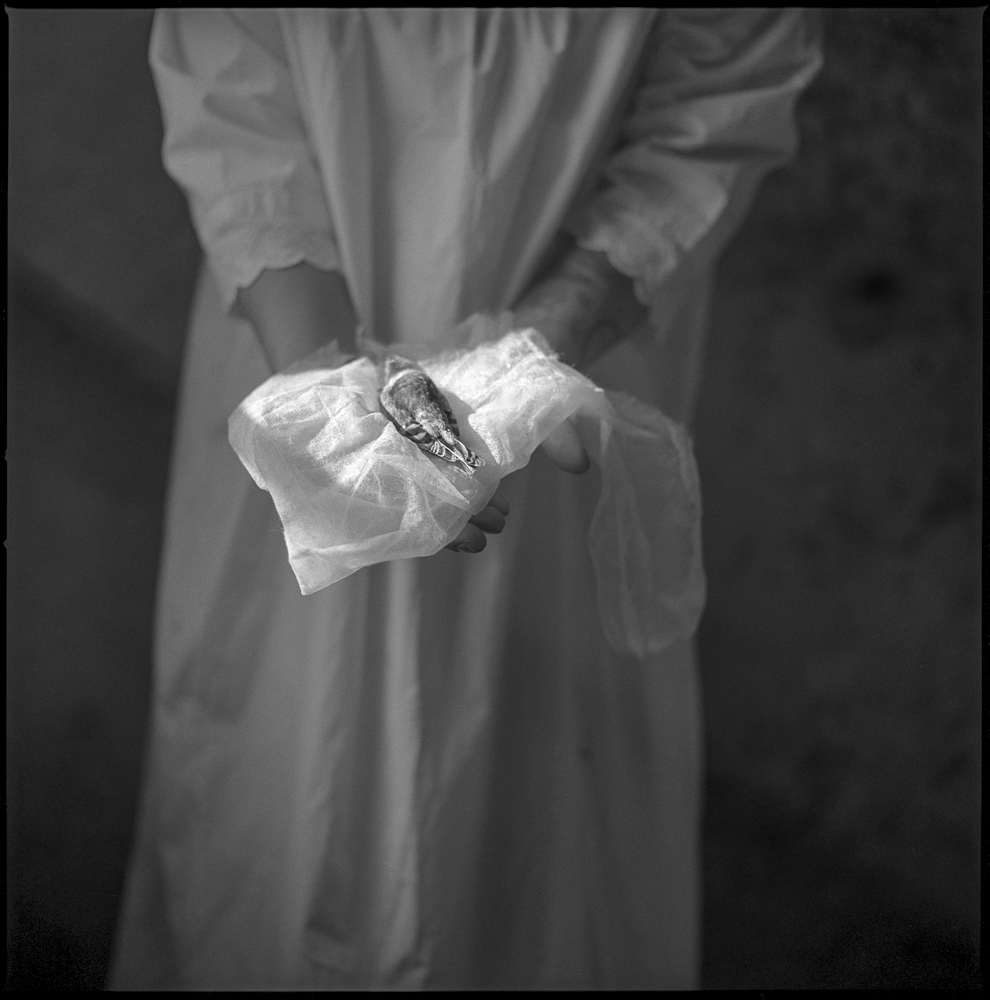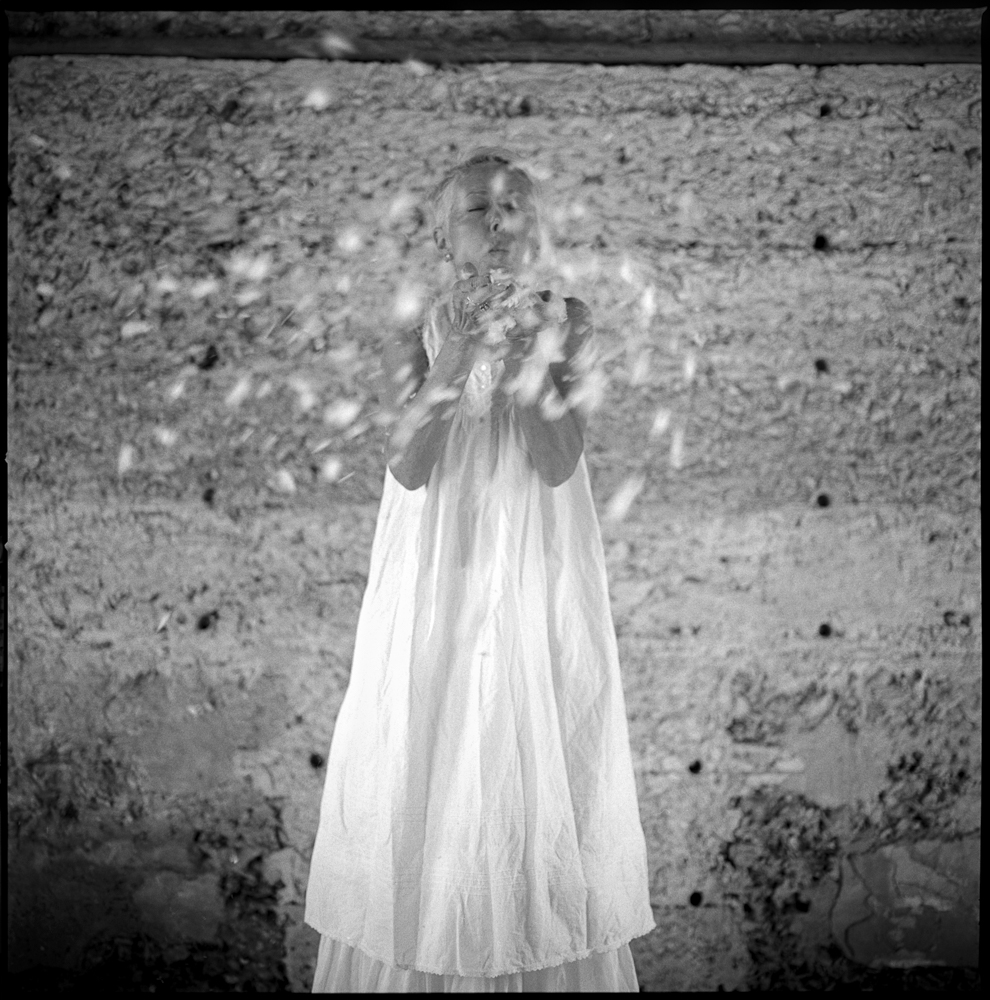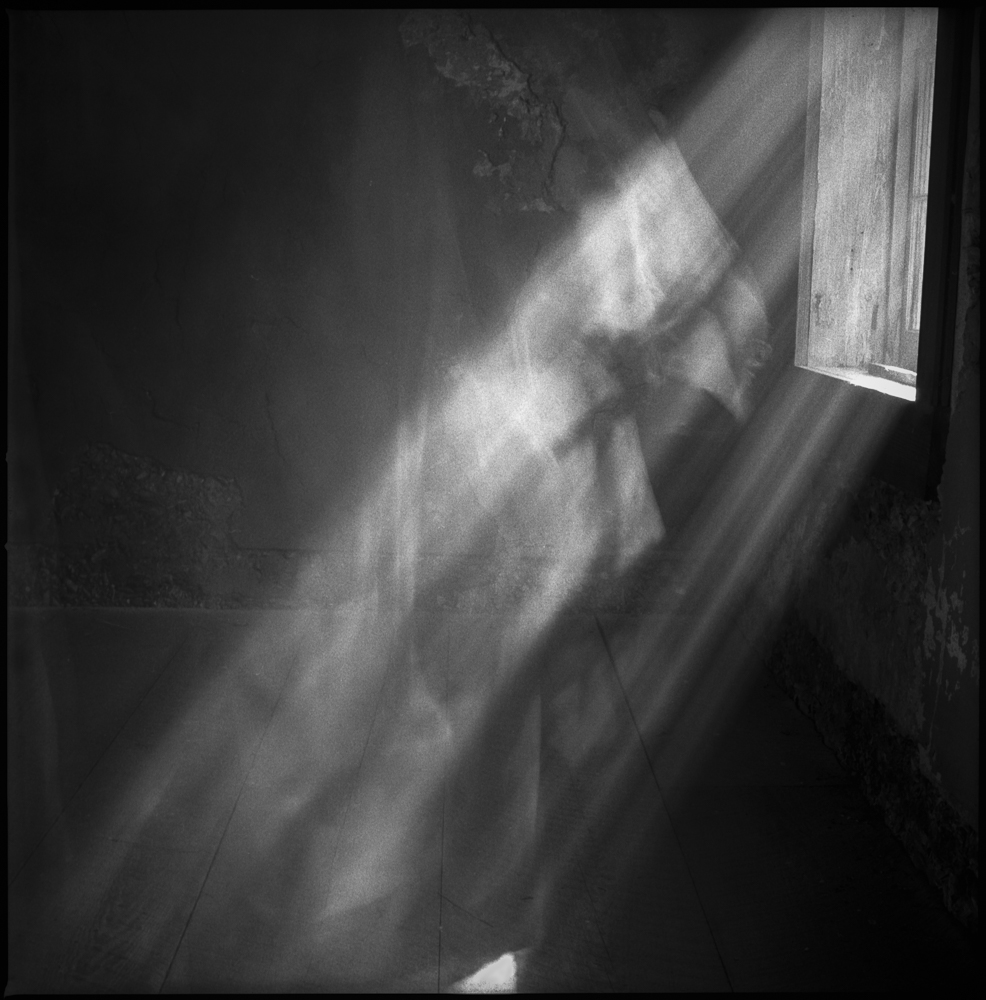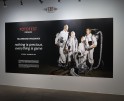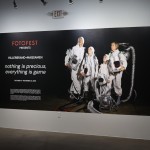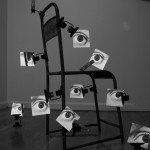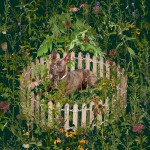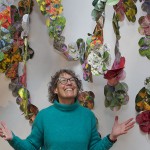Evy Huppert: Wild Spirits
Projects featured over the next several days were selected from our most recent call-for-submissions. I was able to interview each of these individuals to gain further insight into the bodies of work they shared. Today, we are looking at the series Wild Spirits, by Evy Huppert.
Wild Spirits
I made this work on journeys south to untamed places in the sea islands of Georgia with a tribe of like-minded artists. The images and characters come from the dreams and memories the land drew out from my personal mythology. Timeless, yet inhabited for millennia, the islands carry a spiritual presence of deep wildness palpable in the light and shadows; the ancient alligators and birds, the feral pigs and donkeys, and the artifacts of their existence lying everywhere. My photographs explore the emotions and spiritual experiences that the land and the light evoked: vulnerability, captivity, lost-ness, sanctuary, and wildness set free.
I photographed in collaboration with the other artists; I conceived of these images made on black and white film as stills taken from a movie. Each is an instant of a longer feature, of a fuller picture not seen but understood to exist. There is a narrative between the frames and a soundtrack within us that I aim to invoke. What we imagine might be the rest of the story is as much a part of the photograph as what we believe we are seeing.
“We are fallen in mostly broken pieces…but the wild can still return us to ourselves.” ~ Robert Macfarlane
Daniel George: What drew you to the South to make work about its distinct light and land?
Evy Huppert: I’m a Northerner who has long been intrigued by the Southern landscape, literature, music, history, traditions, and culture in the way I am intrigued by certain foreign countries. Most of my visits to the South in the past were to the cities, and, as a tourist, I felt very little connection to the life and people and lands of the South. I wanted to deepen that connection and experience. When I learned of an opportunity to join a small group going to Ossabaw Island to make images and converse about art and life, I knew in my bones it was the right time and place.
DG: How do you see your images fitting within the larger dialogue of artwork created in, and about the South?
EH: I see my images as being about a sense of place, history, myth, memory, dreams, and that distinct light; and about loss and hope for restoration and redemption on more than one level. I think these themes are often found in the larger dialogue of work in and about the South. For myself, as a traveler rather than a native, I know I can never photograph as a Southerner, but I am an outsider in love with the land, intrigued and moved by the people and the stories, and I think this strong emotional response is also present in much Southern artwork.
DG: What was it like collaborating with other artists on Ossabaw Island? In what ways do you feel that benefited the project?
EH: Collaborating with other artists during our stays, organized by Anne Berry and Lori Vrba of Pigs Fly Retreats, has been a singularly inspiring experience in which eight strangers became friends and family within, really, a couple of hours. The combined energy and passion for image making of all different styles by all different personalities was exciting, empowering, playful, and challenging. Also, we were ridiculously happy with the island itself. In that environment, it is possible to let go of solitude, creative blocks, and self-doubt, and just be fully immersed in the work for oneself and for one another. I think my project benefitted because I felt connected to place and people, free to take chances, try new things, follow my intuition, and learn from the others. The collaboration expanded the horizon of what I previously thought was possible.
DG: You describe the photographs as being part of a larger, unseen narrative. What does this story look like to you?
EH: To me, it’s a bit like a barely remembered dream, a tale about a journey, perhaps from a sense of captivity to freedom, from deaths to resurrections, from human intervention in nature and climate to a restoration. But I hope the viewer finds their own story when they engage with this work.
DG: You include a quote from Robert Macfarlane in your artist statement. In what ways does that relate to the work, and how do you feel the wild returned you to yourself?
EH: In his book, “The Wild Places,” Macfarlane describes, studies, and mourns the great loss of wildness throughout Britain, and the world, in the past century. Ultimately, though, he finds hope and solace in observing the power of wild life to persevere, and sometimes thrive in tiny places of wildness, even in deserts and cities. This relates to parts of the narrative I see in my work, and is a metaphor for human brokenness and voiceless-ness, a spiritual and actual loss of freedom, or wildness. My time in the Southern wild, in its overwhelming physical beauty, and through the bonds built in making work with and beside the other artists, strengthened my imagination, my intuition, my gratitude for wild places, and my voice.
Evy Huppert is a fine art photographer whose black and white film-based work explores emotional narratives in both landscape and portraiture. A native of Minnesota and long-time resident of New England, she considers herself to be a true ‘child of the North.’ Permanently light-deprived, her remedy for personal and collective seasonal affective disorder is making images that are often about light itself.
Her work has been included in juried exhibits at the Griffin Museum of Photography, Vermont Center for Photography, Center for Fine Art Photography, PhotoPlace Gallery, and A Smith Gallery. Her photographs have also appeared in several publications, including The Hand Magazine and SHOTS Magazine, where Evy was the featured Emerging Photographerin fall, 2017. Her work is in private collections in the US and Europe.
Evy will be exhibiting a diptych collaboration with Australian photographer/film maker Angus Scott, made during a recent roadtrip in Australia with Fox Darkroom & Gallery, in a Griffin Museum of Photography exhibition entitled In Your Mother Tongue: A Word and Image Dialogue, at the Lafayette City Center Passageway Gallery, Boston MA from June 26 – September 14.
Posts on Lenscratch may not be reproduced without the permission of the Lenscratch staff and the photographer.
Recommended
-
Ricardo Miguel Hernández: When the memory turns to dust and Beyond PainNovember 28th, 2025
-
Pamela Landau Connolly: Columbus DriveNovember 26th, 2025
-
Interview with Maja Daniels: Gertrud, Natural Phenomena, and Alternative TimelinesNovember 16th, 2025
-
Robert Rauschenberg at Gemini G.E.LOctober 18th, 2025
-
Hillerbrand+Magsamen: nothing is precious, everything is gameOctober 12th, 2025

